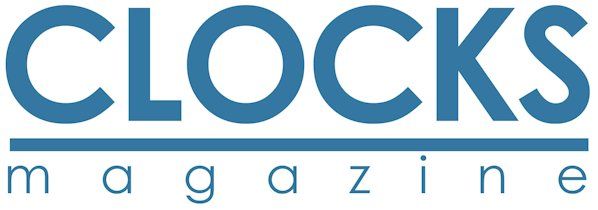Blacksmith clockmakers
I have just re-read the very interesting article by Brian Loomes in Clocks, January 2010, concerning a lantern clock by Thomas Dyde, one of the many clockmakers discussed in my new book The Great Clockmakers of the Blacksmiths Company 1600-1800, which has taken 30 years to research.
Thomas Dyde was the son of Thomas Dyde and Elizabeth Smith who married at Blockley, Gloucestershire, on 6th November 1628. Thomas junior was baptised on 1st June 1635 at Blockley and apprenticed on 17th February 1647/8 to watchmaker John Warfeild for eight years and was freed by the Blacksmiths Company in 1656.
John Warfield had been apprenticed to Richard Craile (the last of Robert Grinkin senior’s apprentices) on 24th April 1626 and freed in 1637. John Warfield trained a number of skilled craftsmen, including John Dyde, the cousin of Thomas, apprenticed on the same day, 27th November 1655, as Alexander Warfeild, who may have been John’s own son, baptised on 13th June 1639 at St Dunstan in the West, Fleet Street, London (John’s workshop was in Fleet Street). John Dyde was apprenticed to John Warfeild for eight years and Alexander was apprenticed for seven years.
John Dyde was freed by the Blacksmiths Company in 1663, but Alexander Warfeild did not take up his freedom until 2nd June 1687 (when he bound an apprentice Thomas Furness), having left London in a hurry after the death of John Warfeild in November 1665 (the year of the plague) and settled in West Wycombe, Buckinghamshire, where his son Alexander was baptised on 31st October 1668, but this may be wrong (or were there two Alexander Warfeilds?) Thomas Furness was freed by Alexander Warfeild’s widow, Elizabeth, on 5th July 1694 and he went on to bind at least four apprentices, three of whom were freed by the Blacksmiths Company.
Thomas Dyde is recorded as binding only two apprentices, John Harris on 17th December 1660, freed in 1669, and Charles Murry presented on 13th July 1680, but turned over to Thomas Tompion after Thomas Dyde’s death in 1686. Charles Murry does not appear to have been freed by either company. Thomas Dyde (2) was freed by the Blacksmith’s Company in 1687 and may have been the son of John Dyde, or Charles, Thomas’s elder brother, or someone else in the family, but Thomas (1) did not appear to have a son Thomas.
Incidentally, Thomas Dyde was described as a smith because everyone who was free of the Blacksmiths Company was called a smith no matter what trade or craft he practised, even when his craft was that of a baker, bricklayer, fishmonger, painter or clockmaker.
John Dyde was freed in 1663 and found to Benjamin Harris about 1670, but he was also turned over the Thomas Tompion, about 1675, after the death of John. Benjamin Harris was freed by the Blacksmiths Company in 1697 and he presented Gregory Nicklis as his apprentice on 16th February 1681/2, but he was later turned over to Thomas Taylor of the Clockmakers Company but not freed by either company.
It is thought that both the Dyde cousins were probably working for Thomas Tompion, supplying his workshop with watches. Neither of the Dydes seemed to have produced many clocks and watches signed by themselves. Thomas Dyde’s extant clocks consist of three or four lantern clocks, one longcase clock and one watch. While John Dyde does not appear to have left us any examples of his work, he probably made mainly watches.
Now that my book is written I would greatly appreciate any help from your readers in obtaining photographs of clocks and watches by the following makers to illustrate the book. I will of course be pleased to acknowledge their help. Late 17th century makers of interest include John and Nathaniel Higginson, John and Nicholas Harris, John and Humphrey March, Humphrey Maysmore, John and Richard Washington, Thomas Killingworth, Henry Kilmaster (or Kilmister), Robert Quare, James Walker, Daniel Parker and Joseph Buckingham. The early 18th century workmen would include George Harris, George and Edward Kingsmell, Peter Kinsey, William West, William King, Stephen Howell, Edward Pitcher, John Lind, Peregrine Tawney, John and Thompson Hampson, Michael Sheilds, Arthur Downes, the Skeklethorpes (Ben, Richard and William) and the Merryweathers (John, Edmund and Francis). The Ogdens (Sam, John and Isaac), who were also working as scalemakers 1667-1730 are also of interest.
Keith Bates, UK
|

